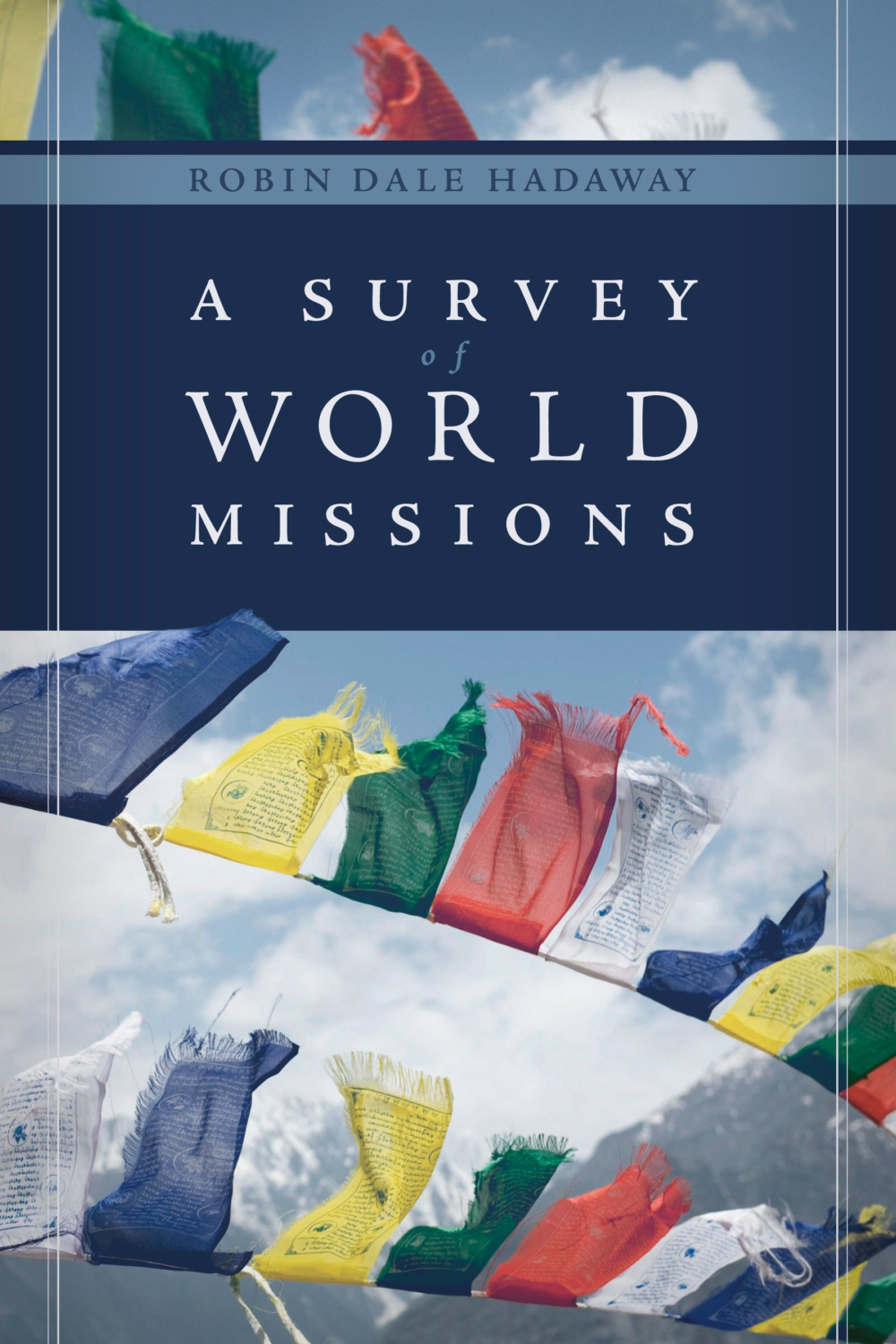
A Survey of World Missions
by Robin Dale Hadaway, B & H Academic, 2020, 352 pages, US$29.99
This review was originally published in Evangelical Missions Quarterly, October 2021.
Robin Hadaway, professor of missions at Midwestern Baptist Theological Seminary, draws from his rich and diverse cross-cultural ministry experience to provide a welcome addition to the field of missiology. Hadaway has traveled and ministered in numerous countries and among diverse people groups. His personal illustrations and anecdotes from these encounters and experiences are interspersed throughout the book to keep the reader’s attention.
The book’s eleven chapters encompasses a wide swath of topics with two appendices on baptism and ecclesiology. He frequently provides various viewpoints on subjects, beginning with views, theories, philosophies and activities of missions in the Introduction. In the rest of the book, he discusses perspectives on salvation (pluralism, inclusivism, exclusivism), evangelism strategies, world religions, worldview, and contextualization, to name a few.
The book succeeds in presenting multiple views of different issues which need consideration for mission work. Hadaway also provides encouraging reminders for those called to minister cross-culturally, among them, that “without the Lord opening the minds of those in the culture, no one could be saved out of Islam, Hinduism, Buddhism, or atheism” (27). He insists that “the Christian church represents God’s chosen vessel to constitute his presence on earth” (53), provides helpful insights into emic and etic perspectives of culture (136), and warns of “amateurism” (261). Hadaway also treats practical aspects of mission, including finances, the place of mission agencies (268), and the “importance of the missionary spouse” (265). One particularly important issue is the wisdom of church-planting strategies where missionaries become de facto pastors of churches rather than starting multiple churches and training others (229–30). Every missionary should consider his thoughts on indigenous principles of ministry (271–75) and the future of missions in the twenty-first century (chap. 11).
The ground Hadaway covers has had many precursors whom he cites and footnotes extensively. His book shares the weakness of many survey books in covering much ground on the surface without going deeper into the many topics discussed. At the end of each chapter he helpfully provides information on resources for further study. The lengthy bibliography demonstrates the breadth of Hadaway’s research and his acquaintance with mission literature. The name and subject indexes are especially welcome in searching through the book.
There are several quibbles I have with the book of which I mention only two. A second-hand anecdote stood out about the husband of a Muslim convert who tried unsuccessfully to burn a Bible with gasoline. I think it is a stretch to claim this “illustrates the primacy of the Word of God and its indestructibility” (17), but it is an interesting story. I also would disagree with his understanding of missions office personnel as “missionaries” (264). They are valued co-laborers, but in my opinion the use of missionary in this way dilutes the meaning of the word.
Hadaway provides a helpful overview of missions from a practitioner. College level students, pastors, and laypersons alike would benefit from this introduction to the subject of missions. There is more than enough here to wet one’s feet before going on into deeper waters.
For Further Reading:
Pocock, Michael, Gailyn Van Rheenen, and Douglas McConnell. The Changing Face of World Missions: Engaging Contemporary Issues and Trends. Baker Academic, 2005.
Skreslet, Stanley H. Comprehending Mission: The Questions, Methods, Problems, and Prospects of Missiology. Orbis Books, 2012.
Van Rheenen, Gailyn. Missions: Biblical Foundations and Contemporary Strategies. Zondervan, 1996.